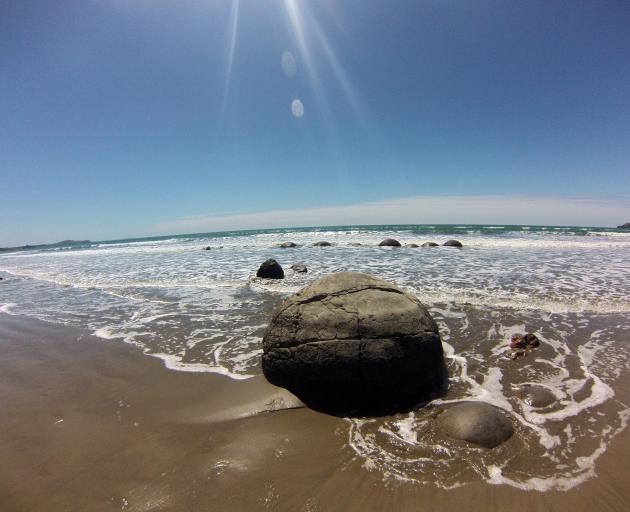
Now, a new study which investigated the famous features of the Otago coast, exposed by erosion of sedimentary rocks laid down from 65 million to 13 million years ago, has shed more light on how they and other "concretions" has formed.
Scientists have often wondered why these hardened masses of carbonate formed around dead organisms, in round shapes and sharp boundaries with the surrounding material, typically in marine mud and mudstone.
They have long asked what conditions cause them to form, how long they take to grow, why they stop growing, and why they are so different from the surrounding rock or sediments.
Researchers at Japan's Nagoya University developed a method to analyse concretions using L-shaped "cross-plot diagrams" of diffusion and growth rate, with which they analysed dozens of concretions from three sites in Japan and compared them with those at Moeraki and in England.
The results appeared to change what had long been assumed about the rate at which they formed.
"Until now, the formation of spherical carbonate concretions was thought to take hundreds of thousands to millions of years," study co-author Koshi Yamamoto said.
"However, our results show that concretions grow at a very fast rate over several months to several years."
This rapid sealing mechanism could explain why some concretions contain well-preserved fossils of soft tissues that are rarely fossilised under other conditions.
"The concretions maintained their characteristics, with well-preserved fossils at their centres or textures indicative of the original presence of organic matter," the study's first author, Hidekazu Yoshida, said.
"Simple mass balance calculations also demonstrate that the carbon fixed in the carbonate concretions came predominantly from the organs of organisms inside the concretions."
All the studied concretions were composed of calcite, with relatively consistent compositions throughout, distinct from the surrounding muddy matrix.
Fine-grained, generally clay-rich sediments were found to be important to limit diffusion and permeability, and to slow the migration of solutes.
The scientists concluded that better understanding the rapid precipitation of calcite due to the presence of organic material could also have practical applications in the field of sealing technology.












